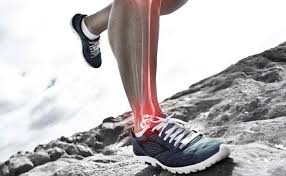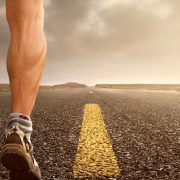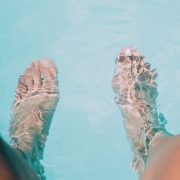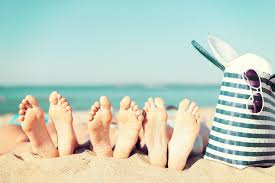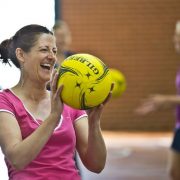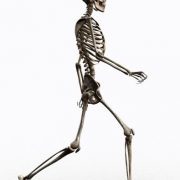The only statistically significant change orthotics made were on the forces occurring through the feet!
Where do these forces come from?
If you were paying attention to science in high school, you will remember the equation F= MA, or force equals mass, (our body) times acceleration, (from gravity).
This force is generated at all times and affects your feet particularly in weight-bearing, when you are standing, walking and significantly when you’re running.
This force is transmitted through your skeletal structure with a supportive network of soft tissues, (ligaments, tendons, fascia, muscles, etc). All this provides stability to assist the transmission of force when you move, that is, in dynamic function. This amazing ability is called Tensegrity.
Wikipedia says “Tensegrity, tensional integrity or floating compression, is a structural principle based on the use of isolated components in compression inside a net of continuous tension, in such a way that the compressed members (usually bars or struts) do not touch each other and the prestressed tensioned members (usually cables or tendons) delineate the system spatially.” Wow!
No body’s perfect, however. We all have some skeletal misalignment from our genetic heritage. A minor misalignment is usually no problem but if you have something more significant like a twist in the spine, (scoliosis), legs that are bowed, (an excessive internal / external twist in the lower legs) or a leg length difference greater than 6 mm, the placement of the force will not be optimum and will force your body to compensate. Compensation of skeletal misalignment will often place forces on other parts of the body.
So, where does the force go? It travels through your legs and into the foot, to the ground. Not only does the foot have to adapt to the body’s misalignments, it also has to be able to function on lots of different surfaces, like walking on the side of a hill, or in sand or over rocks.
Leonardo da Vinci said “The human foot is a masterpiece of engineering and a work of art “and I wholeheartedly agree with him!
To return to our high school science, another law of physics we learnt was Newton’s third law, ”For every action, there is an equal and opposite reaction”.
As bizarre as this sounds, as you place your body weight onto the ground through your foot, there is an opposite and equal force from the ground pushing into the foot; we call this ‘ground reaction force’. Ground reaction force loads the foot from below, while your body is loading the foot from above.
If the force occurs on structures that are not able to withstand them and for a prolonged period of time, the risk of injury is significantly increased. If an injury does occur and the excessive forces are not reduced or removed a chronic pain or only partial healing will result. When the healing tissues are exposed to the excessive forces and become reinjured, a cycle of healing and reinjury occurs where the body never returns to the state it was prior to the injury.
May the force be with you!
The effect of force on your body is why rest and gradual and paced return into activity is so important. You need time to allow the injured tissues to adapt to the stresses and be able to withstand them.
Excessive forces can be reduced, managed and redirected. Your muscle flexibility and strength, your joint mobility, footwear choice and orthotics may all play a part.
At Total Care Podiatry we have specialist equipment and expertise in musculoskeletal podiatry and physiotherapy to analyse, diagnose and address the excessive forces your body is trying to cope with. Our holistic approach will help you through your rehabilitation and reduce your risk of further injury in the future.
Book online or Call Total Care Podiatry on 5223 1531.
1. Blake and Denton 1985, Donatelli et al 1988,Mororas & Hodge 1993, and many more.
2. “Influence of a custom foot orthotic intervention on lower extremity dynamics in healthy runners”, Christopher McLean, Irene MaClay Davis, Joseph Hamill 2006
WARNING: This information is for educational purposes only and is not intended to replace professional podiatric advice. Treatment will vary between individuals depending upon your diagnosis and presenting complaint. An accurate diagnosis can only be made following personal consultation with a Podiatrist.
